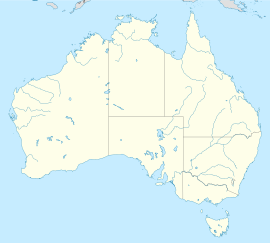Adelaide South Australia
|
Adelaide South Australia |
|||||||||
|---|---|---|---|---|---|---|---|---|---|

From top to bottom, left to right: Central Adelaide from Mount Lofty, the UniSA Building on North Terrace, St Peter's Cathedral, the beachside suburb of Glenelg, a rotunda in Elder Park, and Victoria Square illuminated in the evening
|
|||||||||
| Coordinates | 34°55′44.4″S 138°36′3.6″E / 34.929000°S 138.601000°ECoordinates: 34°55′44.4″S 138°36′3.6″E / 34.929000°S 138.601000°E | ||||||||
| Population | 1,326,354 (2016) (5th) | ||||||||
| • Density | 407.144/km2 (1,054.499/sq mi) (2011) | ||||||||
| Established | 28 December 1836 | ||||||||
| Area | 3,257.7 km2 (1,257.8 sq mi) | ||||||||
| Time zone | ACST (UTC+9:30) | ||||||||
| • Summer (DST) | ACDT (UTC+10:30) | ||||||||
| Location | |||||||||
|
|||||||||
| Significant overseas born populations | |
| Country of birth | Population (2011) |
|---|---|
|
|
92,174 |
|
|
21,068 |
|
|
18,434 |
|
|
17,118 |
|
|
13,167 |
Adelaide (/ˈædəleɪd/ AD-ə-layd) is the capital city of the state of South Australia, and the fifth-most populous city of Australia. In June 2016, Adelaide had an estimated resident population of 1,326,354. South Australia, with a total of 1.7 million inhabitants, has the most centralised population of any state in Australia, with more than 75 percent of its people living in greater Adelaide, while the other population centres in the state are relatively small.
Adelaide is north of the Fleurieu Peninsula, on the Adelaide Plains between the Gulf St Vincent and the low-lying Mount Lofty Ranges which surround the city. Adelaide stretches 20 km (12 mi) from the coast to the foothills, and 94 to 104 km (58 to 65 mi) from Gawler at its northern extent to Sellicks Beach in the south.
Named in honour of Adelaide of Saxe-Meiningen, queen consort to King William IV, the city was founded in 1836 as the planned capital for a freely-settled British province in Australia. Colonel William Light, one of Adelaide's founding fathers, designed the city and chose its location close to the River Torrens, in the area originally inhabited by the Kaurna people. Light's design set out Adelaide in a grid layout, interspaced by wide boulevards and large public squares, and entirely surrounded by parklands. Early Adelaide was shaped by prosperity and wealth—until the Second World War, it was Australia's third-largest city and one of the few Australian cities to not have convict history. It has been noted for early examples of religious freedom, a commitment to political progressivism and civil liberties. It has been known as the "City of Churches" since the mid-19th century. The demonym "Adelaidean" is used in reference to the city and its residents.
...
Wikipedia

